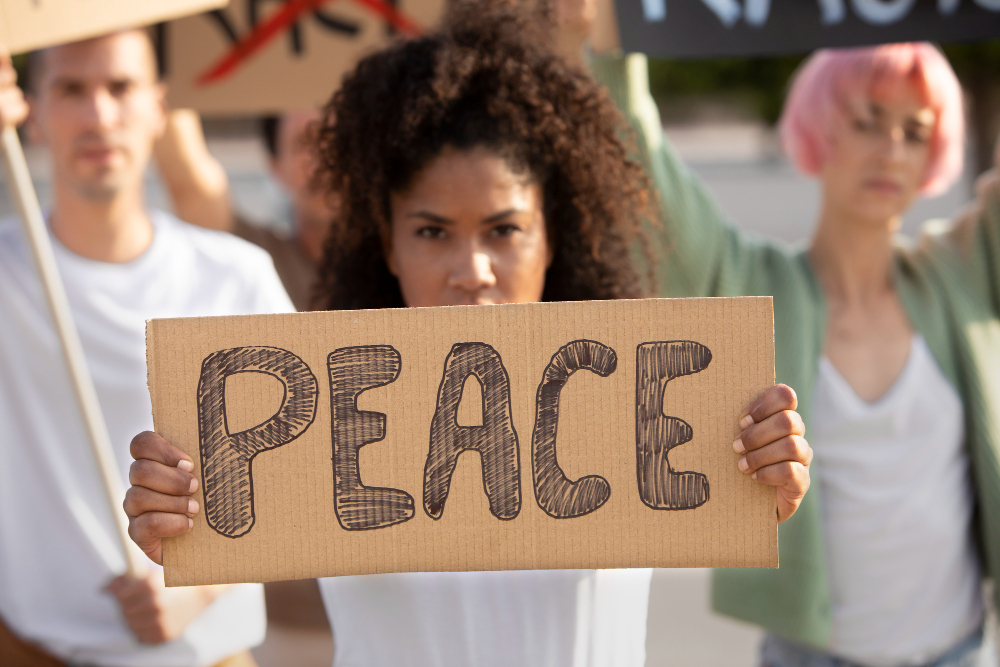Protesting has grown to be a frequent and vital part of both social and political change throughout history. There is no singular route or formula in which protesting is confined to, but two that have captured a larger light.
Both peaceful and violent protests have played significant roles in shaping society, however peaceful protests have shown an effectiveness in an ability to gain widespread support while maintaining moral authenticity. While a more loud and violent protest may be able to turn a lot more heads, it’s never for good reasons.
The lack of negative attention often feels like it results in a lack of attention in general. Peaceful protests rely on nonviolent resistance, public demonstrations, boycotts, sit-ins, and legal action to advocate for change. They serve as a powerful tool for raising awareness, mobilizing communities, and pressuring governments or institutions to address grievances.
The success of these types of protests comes from the ability they have to maintain discipline, attract attention from the media, and gain both the public’s sympathy and respect.
History has been littered with peaceful protests that have made significant sound in the world and have left a lasting impact. We continue to see the change from protests brought on by the Women’s Suffrage Movement back that carried from the 19th to the 20th century, where the protesting involved hunger strikes and legal campaigns for voting rights.
This march eventually led to women gaining the right to vote, a powerful change giving women power in the issues today.
Peaceful protests continue to be a powerful source, the protest that occurred in downtown Los Angeles regarding the U.S. Immigration and Customs Enforcement (ICE) raids took place February 4. This was a call out to the recent ICE raids and mass deportations that have unfortunately taken a toll on many lives, hence why a protest was incredibly necessary.
Demonstrators marched along the streets through downtown Los Angeles, the inspiringly large group could be seen through aerial footage walking in the middle of Spring street, blocking intersections, and even taking over the freeway with their bodies, flags, and signs. All with no intent of violence, only a message.
This was all part of a much larger protest, the national initiative labeled “A Day Without Immigrants” where both documented and undocumented foreign-born workers aimed to show their vital role in the United States. Refraining from work, school, and other activities was a silent protest, but one that physically put things in perspective, showing how society would actually be impacted by President Donald Trump’s immigration crackdown.
The effectiveness of violent protests is widely debated, while they can draw immediate attention, they often lead to harsh crackdowns and loss of public support. In some cases, an issue feels so big it cannot be changed through words and peace alone, which might be true, but it is vital to weigh out the casualties of a violent protest.
While at times it might seem like there is no point to a peaceful protest, they do have the power to encourage widespread participation and have a larger chance of governments engaging with the protests, with a less likely possibility of being met with excessive force or being dismissed as threats.

